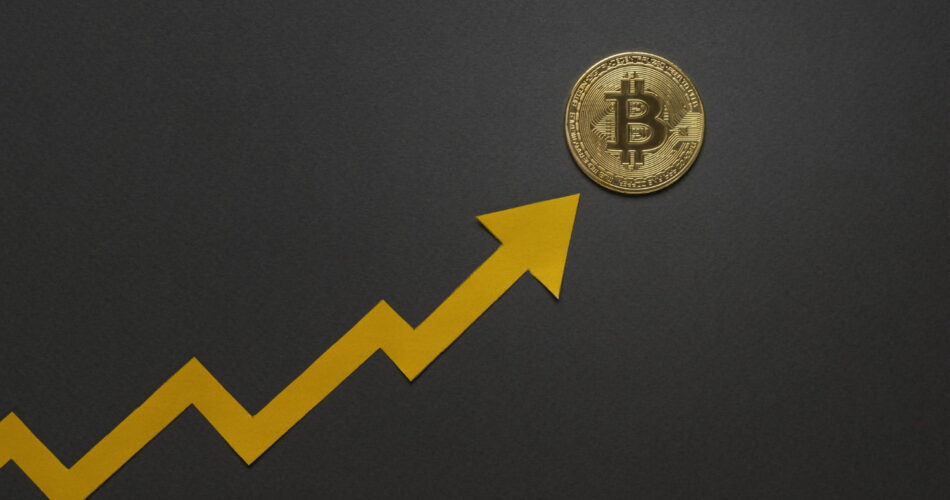Bitcoin, the world’s first cryptocurrency, has experienced significant price fluctuations since its inception in 2009. As a decentralized digital currency, Bitcoin operates on a peer-to-peer network, allowing users to transact without intermediaries. With its limited supply and increasing demand, many investors wonder, “Will Bitcoin go back up?”
In our opinion – YES. In this article, we’ll explore the factors that contribute to Bitcoin’s value, its potential for future growth, and why we think so.
Table of Contents
The Uniqueness of Bitcoin

1. Decentralized Nature
Bitcoin operates on a decentralized network, meaning it is not controlled by any single entity. This feature sets it apart from traditional currencies and makes it resistant to censorship and government interference.
2. Pioneering Role
As the first cryptocurrency, Bitcoin has paved the way for the development of thousands of other digital assets. Its pioneering role has earned it the nickname “digital gold.”
3. Limited Supply
One of Bitcoin’s unique features is its capped supply of 21 million coins. This limited supply creates scarcity, which can drive demand and potentially increase its value.
Historical Price Analysis
Bitcoin’s Price Roller-Coaster: A Glimpse into the Past
Bitcoin’s journey began in 2009 when it was introduced by an anonymous person or group of people using the pseudonym Satoshi Nakamoto. In its early days, Bitcoin was virtually worthless, with its first recorded price being around $0.003 in March 2010. However, it didn’t take long for the cryptocurrency to gain traction.
2011-2012
Bitcoin reached the $1 mark in February 2011. By June 2011, it had surged to $31 before crashing back down to $2 by the end of the year. This was the first of many boom-and-bust crypto market cycles that would come to characterize Bitcoin’s price history.
2013
Bitcoin’s price crossed the $100 mark for the first time in April 2013. By November, it had reached $1,000, fueled by growing interest in the cryptocurrency and increased media coverage.
2017
Bitcoin’s price skyrocketed from around $1,000 at the beginning of the year to nearly $20,000 by December. This meteoric rise was driven by a surge in retail and institutional interest, as well as the launch of Bitcoin futures trading.
2018-2019
Following the 2017 bull run, Bitcoin’s price entered a bear market, dropping to around $3,200 by December 2018. Over the next year, it gradually recovered, reaching $10,000 by mid-2019.
2020-2021
Bitcoin’s price reached new all-time highs, surpassing $60,000 in April 2021. This rally was fueled by factors such as increased institutional adoption, economic uncertainty due to the COVID-19 pandemic, and the Bitcoin halving event in May 2020.
Previous Recoveries: What Drove Them?
Bitcoin’s price history is marked by periods of rapid growth followed by corrections. Several factors have contributed to its recoveries:
Increased Adoption
Bitcoin’s price has often surged in response to growing adoption by both retail and institutional investors. For example, the announcement of Bitcoin futures trading in 2017 and Tesla’s $1.5 billion investment in 2021 both led to price rallies.
Technological Advancements
Upgrades to the Bitcoin network, such as the implementation of Segregated Witness (SegWit) in 2017, have improved its scalability and efficiency, contributing to price recoveries.
Geopolitical Events
Bitcoin’s price has been influenced by geopolitical events, such as the Cyprus banking crisis in 2013, which led to increased interest in the cryptocurrency as a safe haven asset.
Halving Events
Bitcoin’s halving events, which occur approximately every four years, reduce the rate at which new Bitcoin is created. These events have historically been associated with price rallies, as reduced supply can lead to increased demand.
Comparing Past and Present
Analyzing Bitcoin’s past price movements can provide insights into its potential future trajectory. However, it’s essential to consider the broader context, including changes in market sentiment, technological developments, and macroeconomic factors.
| Year | Major Event | Price Impact |
|---|---|---|
| 2013 | Cyprus Banking Crisis | Positive Surge |
| 2017 | Bitcoin Futures Launch | Significant Rise |
| 2020 | Pandemic & Economic Instability | New All-Time Highs |
Fundamental Factors Affecting Bitcoin’s Price

The Dynamics of Supply and Demand
Bitcoin’s Fixed Supply and Halving Events
Bitcoin’s total supply is capped at 21 million coins. This fixed supply creates a scarcity that can drive up the price as demand increases. Additionally, Bitcoin undergoes a “halving” event approximately every four years, where the reward for mining new blocks is reduced by 50%. This effectively cuts the rate at which new Bitcoin enters the market, further contributing to its scarcity. Historically, halving events have been associated with price rallies, as reduced supply can lead to increased demand, driving up the price.
Growing Demand
The demand for Bitcoin has been steadily increasing over the years. Several factors contribute to this growing demand:
- Retail Investors: As awareness and understanding of Bitcoin and cryptocurrencies have grown, more retail investors have entered the market, seeking to diversify their portfolios or capitalize on price fluctuations.
- Institutional Investors: Large financial institutions, hedge funds, and corporations have started to invest in Bitcoin as a store of value or hedge against inflation. Notable examples include Tesla, MicroStrategy, and Grayscale.
- Global Adoption: Bitcoin’s adoption as a medium of exchange has been growing, with more merchants and service providers accepting it as a form of payment. Additionally, countries like El Salvador have recognized Bitcoin as legal tender, further boosting its demand.
Technological Advancements
Lightning Network and Scalability
The Lightning Network is a second-layer solution built on top of the Bitcoin blockchain that enables faster and cheaper transactions. By creating off-chain payment channels, the Lightning Network alleviates congestion on the main blockchain, improving Bitcoin’s scalability and usability as a medium of exchange. This technological advancement has the potential to drive increased adoption and, consequently, demand for Bitcoin.
Financial Integration
Bitcoin’s integration into traditional financial systems has been a significant driver of its price. Payment processors like Square and PayPal have incorporated Bitcoin into their platforms, allowing users to buy, sell, and hold the cryptocurrency. This integration has made it easier for people to access and use Bitcoin, contributing to its growing demand.
The Regulatory Dance
Government Policies
Government policies and regulations play a crucial role in shaping the cryptocurrency landscape. Supportive regulations can foster innovation and adoption, while restrictive policies can hinder growth. For example, Japan’s recognition of Bitcoin as a legal payment method in 2017 boosted its legitimacy and adoption. In contrast, China’s crackdown on cryptocurrency exchanges and mining operations has had a negative impact on the market.
Legal Recognition
Legal recognition of Bitcoin as an asset class or legal tender can significantly influence its demand and price. For instance, El Salvador’s decision to adopt Bitcoin as legal tender has given it a significant legitimacy boost. However, it’s essential to note that regulatory developments can be a double-edged sword, as they can also introduce uncertainties and challenges for the cryptocurrency market.
The Current State of Bitcoin Mining
As of now, approximately 92% of Bitcoin’s total supply of 21 million coins has already been mined. This means that only around 1.68 million coins are left to be mined. The fact that such a large percentage of Bitcoin has already been mined has several implications for the cryptocurrency’s price:
Scarcity
One of the key factors that drive the value of an asset is its scarcity. Bitcoin’s design includes a maximum supply of 21 million coins, making it a scarce asset. As more Bitcoin is mined and the remaining supply decreases, this scarcity is likely to increase, which can drive demand and potentially push the price higher.
Miner Incentives
As the block reward decreases and the cost of mining increases, miners may be less incentivized to sell their newly mined Bitcoin at lower prices. Instead, they may choose to hold onto their Bitcoin in anticipation of higher prices in the future. This reduced selling pressure can contribute to upward price momentum.
Stock-to-Flow Model
The stock-to-flow model is a valuation method used to predict the price of scarce assets like gold and Bitcoin. It measures the ratio of the current stock of an asset (the total amount already mined) to the flow of new production (the amount being mined each year). A higher stock-to-flow ratio indicates greater scarcity and has historically been associated with higher prices. As more Bitcoin is mined and the remaining supply decreases, the stock-to-flow ratio is likely to increase, which could positively impact the price.
Market Sentiment
The fact that 92% of Bitcoin has already been mined can influence market sentiment. Investors may view the decreasing supply of new Bitcoin as a bullish signal, leading to increased buying pressure and potentially driving the price higher.
Macroeconomic Factors

Inflation and Monetary Policy
Central Bank Actions
Central banks around the world have the power to influence their respective economies through monetary policy. One of the tools at their disposal is the ability to print money. However, excessive money printing can lead to inflation, where the purchasing power of a currency decreases. In such scenarios, Bitcoin, with its fixed supply and decentralized nature, is often viewed as a hedge against inflation. As central banks have implemented quantitative easing measures in response to economic challenges, such as the COVID-19 pandemic, Bitcoin’s appeal as a store of value has grown.
Bitcoin’s Value Proposition
Bitcoin’s limited supply makes it inherently deflationary, as there will only ever be 21 million coins in existence. This scarcity contrasts with fiat currencies, which can be printed at will by central banks. As a result, Bitcoin is often seen as a hedge against the inflationary pressures that can erode the value of traditional currencies. This perception has been a significant driver of demand for Bitcoin, especially in countries experiencing high inflation rates.
Geopolitical Influences
Economic Instability
In countries facing economic instability, hyperinflation, or capital controls, Bitcoin has emerged as an alternative financial system. Its decentralized nature means it is not subject to government control, making it an attractive option for individuals looking to preserve their wealth. For example, during the economic crisis in Venezuela, many people turned to Bitcoin as a way to protect their savings from hyperinflation.
Legal Tender Status
The move by countries like El Salvador to adopt Bitcoin as legal tender has given it a significant legitimacy boost. This recognition can drive increased adoption and demand for Bitcoin, as it becomes integrated into the country’s financial system. However, it’s essential to note that such developments can also introduce new challenges and uncertainties, as governments and regulators grapple with the implications of incorporating cryptocurrencies into their economies.
Geopolitical Tensions
Geopolitical events, such as trade wars, sanctions, and international conflicts, can influence the global financial landscape. In times of uncertainty, investors often seek safe-haven assets to protect their wealth. Bitcoin, with its decentralized and borderless nature, is increasingly being viewed as a potential safe-haven asset. As geopolitical tensions rise, demand for Bitcoin may increase, driving up its price.
Market Sentiment and Speculation

The Emotional Market
Market sentiment refers to the overall attitude of investors towards a particular asset or market. It can be influenced by a wide range of factors, including news, social media, and public perception. In the cryptocurrency market, sentiment often plays a significant role in driving price movements. Positive sentiment can lead to buying pressure, driving up the price, while negative sentiment can result in selling pressure, pushing the price down. The cryptocurrency market is known for its volatility, and sentiment-driven price swings can be rapid and dramatic.
Media’s Role
Media coverage, both traditional and social, can have a significant impact on market sentiment. Positive news stories about Bitcoin, such as regulatory developments, technological advancements, or high-profile endorsements, can boost investor confidence and drive up the price. Conversely, negative news, such as security breaches, regulatory crackdowns, or critical statements from influential figures, can dampen sentiment and lead to price declines.
For example, when Tesla CEO Elon Musk announced that the company had purchased $1.5 billion worth of Bitcoin, the price surged. However, when Musk later tweeted that Tesla would no longer accept Bitcoin as payment due to environmental concerns, the price dropped.
The Speculation Bubble
Speculation plays a significant role in the cryptocurrency market. Many investors buy Bitcoin and other cryptocurrencies with the hope of selling them at a higher price in the future. This speculative behavior can lead to price bubbles, where the price of an asset rises rapidly and significantly above its intrinsic value. However, bubbles are often followed by corrections, where the price falls back to more sustainable levels.
Historically, Bitcoin has experienced several speculative bubbles. For example, in 2017, Bitcoin’s price surged from around $1,000 to nearly $20,000 within a year, driven by a wave of retail and institutional interest. However, this rapid rise was followed by a correction, with the price dropping to around $3,200 by December 2018.
FOMO and FUD
Two common phenomena in the cryptocurrency market are FOMO (Fear of Missing Out) and FUD (Fear, Uncertainty, Doubt). FOMO occurs when investors buy an asset due to the fear of missing out on potential profits. This behavior can drive up the price, as buying pressure increases. On the other hand, FUD refers to the spread of negative information or rumors about an asset, often with the intention of driving down the price. Both FOMO and FUD can contribute to sentiment-driven price swings.
Conclusion
The question, “Will Bitcoin Go Back Up?” is one that has intrigued investors, enthusiasts, and skeptics alike. As we have explored throughout this article, Bitcoin’s price is influenced by a complex interplay of factors, including supply and demand dynamics, technological advancements, regulatory developments, macroeconomic factors, market sentiment, and speculation.
Supply and Demand: Bitcoin’s fixed supply and periodic halving events create a scarcity that can drive up the price as demand increases. Growing adoption by retail and institutional investors, as well as its recognition as legal tender in countries like El Salvador, contribute to this demand.
Technological Advancements: Innovations such as the Lightning Network have improved Bitcoin’s scalability and usability as a medium of exchange. Integration into traditional financial systems has further boosted its adoption and demand.
Regulatory Developments: Government policies and regulations play a crucial role in shaping the cryptocurrency landscape. Supportive regulations can foster innovation and adoption, while restrictive policies can hinder growth.
Macroeconomic Factors: Inflation, economic instability, and geopolitical tensions can influence Bitcoin’s appeal as a store of value or safe-haven asset. In times of uncertainty, investors may seek alternatives to traditional currencies and financial systems.
Market Sentiment and Speculation: The cryptocurrency market is highly sentiment-driven, with media coverage, public perception, and speculative behavior playing significant roles in price movements. FOMO and FUD can contribute to rapid price swings.
While historical data and current indicators provide insights into Bitcoin’s potential future trajectory, it’s essential to remember that the cryptocurrency market is inherently unpredictable. Factors such as regulatory changes, technological developments, and global economic conditions can all impact Bitcoin’s price.


